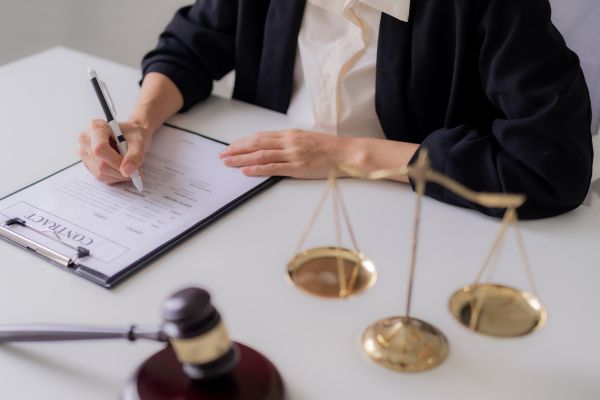Strict Liability vs Negligence: Understanding the Key Differences
In the complex world of law, particularly tort law, two concepts often come up that can significantly impact the outcome of a case: strict liability and negligence. While these terms might seem interchangeable to the untrained eye, they represent two very different approaches to assigning responsibility in legal disputes. This article will dive deep into the nuances of strict liability vs negligence, breaking down the legal jargon to help you better understand their implications.
Why Does It Matter?
Before we jump into the specifics, let’s address why this distinction is so important. Imagine a scenario where you’re injured due to someone else’s actions. Wouldn’t you want to know whether you need to prove that they were careless, or if the mere fact that you were harmed is enough to hold them responsible? That’s the crux of the difference between strict liability and negligence.
Understanding these concepts isn’t just for lawyers; it’s essential for anyone who might find themselves in a legal dispute—whether you’re on the giving or receiving end of a lawsuit. So, let’s unpack these terms and see how they apply in various situations.
What is Negligence?
Negligence is one of the cornerstones of tort law. It’s the idea that a person or entity can be held liable for harm if they fail to act with the level of care that a reasonable person would under similar circumstances.
To successfully prove negligence in a court of law, the plaintiff (that’s the person who’s suing) needs to establish four key elements:
- Duty of Care: The defendant (the person being sued) owed a duty of care to the plaintiff.
- Breach of Duty: The defendant breached that duty by failing to act as a reasonable person would.
- Causation: This breach directly caused the plaintiff’s injury or damages.
- Damages: The plaintiff suffered actual harm or loss as a result.
Let’s break this down with an example. Imagine you’re walking down the street, and a driver, distracted by their phone, runs a red light and hits you. In this case, the driver had a duty of care to follow traffic laws and drive safely. By texting while driving, they breached that duty, and their actions directly caused your injuries. Therefore, the driver could be found negligent and liable for your damages.
What is Strict Liability?
On the flip side, strict liability is a legal doctrine that holds a defendant liable for harm, regardless of their intent or level of care. In other words, even if the defendant took every possible precaution to avoid causing harm, they could still be held responsible.
Strict liability typically applies in cases involving inherently dangerous activities or defective products. For example, if a company manufactures a toy that turns out to be unsafe and causes injury to a child, the company could be held strictly liable, even if they followed all safety protocols during production.
This concept is also frequently applied in cases involving dangerous animals. If you own a wild animal, like a tiger, and it injures someone, you could be held strictly liable for the harm caused, regardless of how well you trained or restrained the animal.
Comparing Strict Liability vs Negligence
Now that we’ve defined these terms, let’s compare strict liability vs negligence side by side:
| Aspect | Negligence | Strict Liability |
| Proof Required | Plaintiff must prove duty, breach, causation, and damages. | Plaintiff only needs to prove that harm occurred. |
| Intent/Care | Defendant’s intent and level of care are crucial factors. | Defendant’s intent and care are irrelevant. |
| Common Scenarios | Car accidents, slip-and-fall cases, medical malpractice. | Product liability, dangerous animals, ultra-hazardous activities. |
| Defenses Available | Contributory negligence, assumption of risk, comparative negligence. | Limited defenses, mostly related to the plaintiff’s actions. |
Why Does the Difference Matter?
The distinction between strict liability and negligence is not just academic; it has real-world implications. For plaintiffs, knowing which doctrine applies can influence their strategy in a lawsuit. For defendants, understanding these concepts can help in mounting a defense or mitigating damages.
For example, in a negligence case, a defendant might argue that they took reasonable precautions or that the plaintiff was partly to blame (known as contributory or comparative negligence). In strict liability cases, however, the focus shifts away from the defendant’s actions and more on whether the harm occurred and if the defendant is connected to it.
Legal Implications in Various Industries
Different industries have different exposure to strict liability and negligence claims. Let’s explore a few:
- Manufacturing: Manufacturers are often held strictly liable for defective products. If a product is found to be unsafe and causes injury, the manufacturer may be liable regardless of their intent or precautions.
- Construction: Negligence claims are common in the construction industry. If a contractor fails to follow safety protocols, resulting in an injury, they could be found negligent.
- Healthcare: Medical malpractice cases usually revolve around negligence. If a healthcare provider fails to meet the standard of care, they can be sued for negligence.
- Animal Ownership: As mentioned earlier, strict liability often applies to cases involving dangerous animals. Owners of such animals are liable for any harm they cause, regardless of the precautions taken.
FAQs About Strict Liability vs Negligence
Q: Can a defendant be held liable under both strict liability and negligence?
A: Yes, in some cases, a defendant could be liable under both doctrines, but typically, a case will proceed under one theory based on the specifics of the situation.
Q: Is strict liability more common than negligence?
A: No, negligence is far more common. Strict liability is reserved for specific situations, such as defective products or inherently dangerous activities.
Q: What defenses are available in strict liability cases?
A: Defenses in strict liability cases are limited. However, a defendant might argue that the plaintiff misused the product or was aware of the risks and assumed them.
Q: How does comparative negligence work?
A: In comparative negligence, the court assesses the percentage of fault of each party. If the plaintiff is found partially responsible, their compensation could be reduced proportionately.
Q: Why is strict liability important in product liability cases?
A: Strict liability is crucial in product liability cases because it encourages manufacturers to prioritize safety, knowing they could be held accountable for any harm caused by their products.
Conclusion: The Bottom Line on Strict Liability vs Negligence
Understanding the differences between strict liability and negligence is vital for anyone navigating the legal landscape. Whether you’re a plaintiff seeking justice or a defendant preparing your defense, these concepts can significantly impact the outcome of your case. Remember, in negligence cases, proving the defendant’s failure to exercise reasonable care is key, while strict liability focuses more on the occurrence of harm itself.
In the ever-evolving legal world, these doctrines serve as fundamental principles that guide how we assign responsibility and protect individuals from harm. Knowing when each applies can make all the difference in a courtroom.
For more in-depth legal resources, you can explore the following authoritative links:
- U.S. Courts – Understanding Civil Cases
- Cornell Law School – Negligence
- FindLaw – Strict Liability



